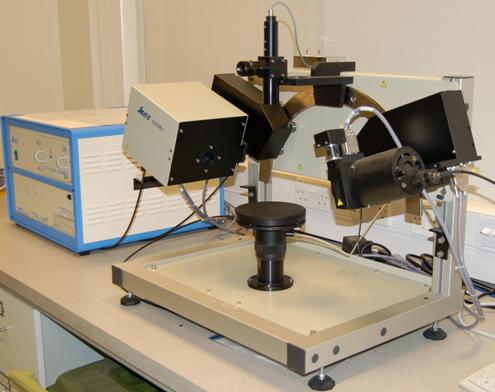Jobin-Yvon UVISEL ellipsometer with a xenon light source. This technique uses elliptically polarized monochromatic light to determine the thickness of surface.
When polarized light interacts with the surface at an angle, it resolves into its parallel (s-polarized) and perpendicular (p-polarized) component. These components are reflected off the surface differently and hence the amplitude and phases of both components are changed. When the s- and p-polarized reflected light beams are combined, the result is the elliptically polarized light.
Ellipsometry uses this phenomenon to calculate the thickness of a transition region between the surface and air, by measuring the ratio r between rs and rp (the reflection coefficients of the s- and p- polarized light respectively). The only sample requirement is that it has to be solid.
